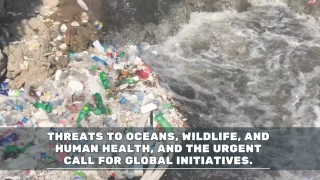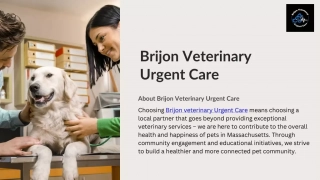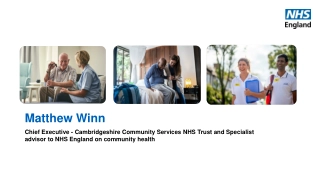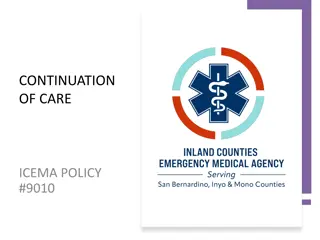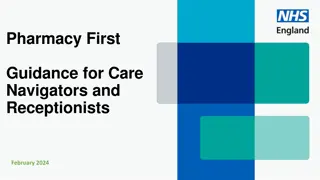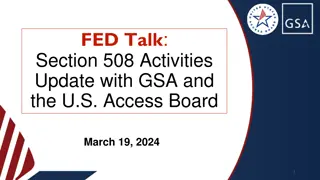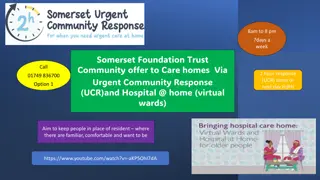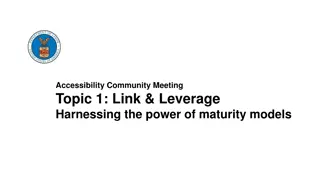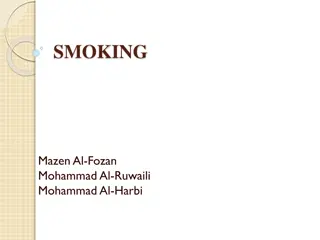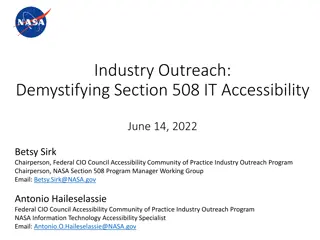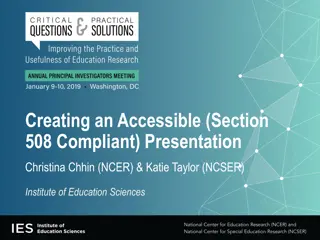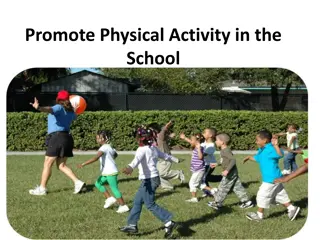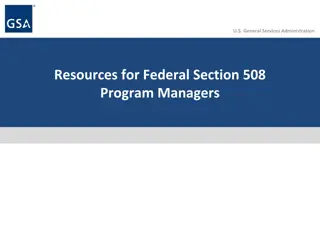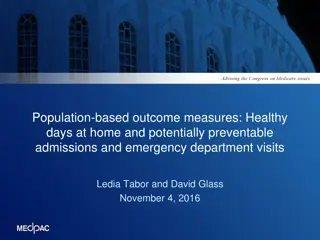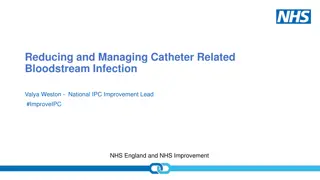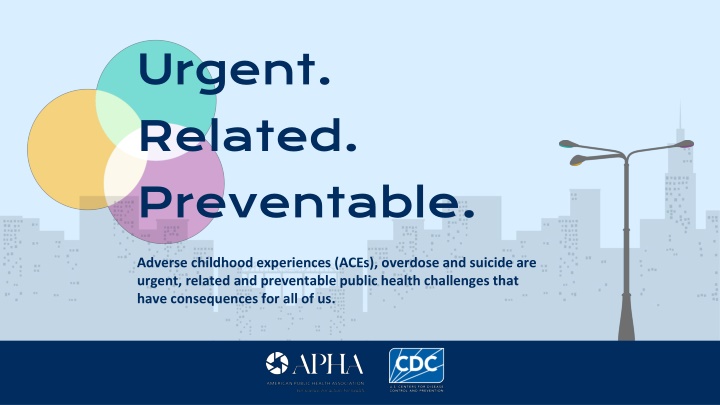
ACEs, Overdose, and Suicide: Urgent Public Health Challenges
Discover the urgency and impact of Adverse Childhood Experiences (ACEs), overdose, and suicide as preventable public health challenges. Learn about the consequences, statistics, and lasting effects, emphasizing the need for awareness and intervention in affected communities.
Download Presentation

Please find below an Image/Link to download the presentation.
The content on the website is provided AS IS for your information and personal use only. It may not be sold, licensed, or shared on other websites without obtaining consent from the author. If you encounter any issues during the download, it is possible that the publisher has removed the file from their server.
You are allowed to download the files provided on this website for personal or commercial use, subject to the condition that they are used lawfully. All files are the property of their respective owners.
The content on the website is provided AS IS for your information and personal use only. It may not be sold, licensed, or shared on other websites without obtaining consent from the author.
E N D
Presentation Transcript
Urgent. Related. Preventable. Adverse childhood experiences (ACEs), overdose and suicide are urgent, related and preventable public health challenges that have consequences for all of us.
ACEs, overdose and suicide are urgent, related and preventable public health challenges.
While these challenges impact all of us, some communities are more affected than others.
ACEs, overdose and suicide are urgent public health challenges.
Urgent Public Health Threat Exposure to adversity and trauma before the age of 18, overdose and suicide contribute to shortened life span, rising health care costs, lost economic productivity and strain on our social service system that affect all of us. This urgency is heightened by trauma passed down from one generation to another and by lack of public investment in some communities. This makes existing health challenges worse and makes it harder to seek preventative or lifesaving resources.
Understanding ACEs Adverse childhood experiences (ACEs) are potentially traumatic events that occur in childhood. ACEs can include neglect, experiencing or witnessing violence, and having a family member attempt or die by suicide. Children of different races and ethnicities do not experience ACEs equally.
The Statistics of ACEs % of Adults Reporting Experiencing 1 or More ACE 50.2% Asian 62.9% White 65.1% Hispanic or Latino 66.7% NH/OPI 70.1% Black 74.6% AI/AN 64% of adults have experienced at least one ACE. 1 in 6 adults have experienced four or more types of ACEs. ACEs are related to at least 7 of the leading causes of death. 77.1% Multiracial ACEs affect some racial/ethnic groups more than others.
ACEs Impacts ACEs can negatively impact development. emotional physical mental behavioral ACEs can also have lasting effects on health, well-being and prosperity far into adulthood.
Understanding Overdose Drug overdose is the poisoning that happens when a drug is taken in excessive amounts. An overdose can be fatal or nonfatal, and all overdoses come with their own emotional and economic toll. Overdose deaths impact some communities more than others.
The Statistics of Overdose From 2021-2022 2021 2022 Opioids were involved in over 65.2 56.6 Deaths per 100,000 standard population In 2022 47.5 More than 44.2 36.8 35.6 107,941 1 MILLION 22.7 21.1 20.1 18.1 people have died since 1999 from a drug overdose. drug overdose deaths occurred in the United States. 5.3 4.7 AI/AN Black White Hispanic NA/OPI Asian of overdose deaths in 2022. the annual increase in drug overdose deaths differed by race/ethnicity.
Overdose Over Time Overdose deaths involving opioids, including prescription opioids, heroin and synthetic opioids (like fentanyl), have increased about eight times since 2002. Number of Overdose Deaths Involving Opioids From 2002 2022 Source: National Center for Health Statistics, National Vital Statistics System, Mortality
Understanding Suicide Dying by suicide continues to be a leading cause of death in the United States. Suicidal ideation and attempts are also on the rise. Suicide rates vary by population.
The Statistics of Suicide In 2022 OVER adults seriously thought about suicide 13.2 million people died by suicide 49,000 3.8 million 1 death every 11 minutes made a plan attempted suicide 1.6 million Source: CDC Suicide Data and Statistics | Suicide Prevention | CDC
Suicide Rates Vary by Population Between 2018 2021, suicide rates significantly increased overall among non-Hispanic AI/AN (26%) and non-Hispanic Black (19.2%) people, and declined by 3.9% among non-Hispanic White people. In addition, suicide risk is higher among people who identify as lesbian, gay or bisexual. Source: https://www.cdc.gov/suicide/facts/disparities-in-suicide.html
Exposure to Suicide Exposure to Another person s suicide Substance use disorder A family history of suicide Suicidal ideation are risk factors that increase the possibility of suicide.
ACEs, overdose and suicide are related public health challenges.
Related Issues ACEs, suicide and overdose are related issues. Exposure to ACEs increases the risk of overdose and suicide later in life.
ACEs and Overdose ACEs are associated with younger age of initiation of opioid use, injection drug use, and lifetime overdose. Source: Stein MD, Conti MT, Kenney S, et al. Adverse childhood experience effects on opioid use initiation, injection drug use, and overdose among persons with opioid use disorder. Drug Alcohol Depend. 2017;179:325-329. doi:10.1016/j.drugalcdep.2017.07.007
Overdose and Suicide Past year prescription opioid misuse is associated with an increase in the odds of suicidal ideation of 40% to 60%. Source: https://pubmed.ncbi.nlm.nih.gov/28364579/
ACEs and Suicide Experiencing any ACE is associated with an increased risk for suicide; the odds of ever attempting suicide are more than 10 times higher for adults with four or more ACEs compared to adults with no ACEs. Source: Hughes K, Bellis MA, Hardcastle KA, Sethi D, Butchart A, Mikton C, Jones L., Dunne MP. The effect of multiple adverse childhood experiences on health: a systematic review and meta-analysis. The Lancet; 2017;2:e356-66.
ACEs, Overdose and Suicide ACEs are associated with increased risk of overdose and suicide later in life. For children, living with a parent with a mental health or substance use problem or losing a loved one to suicide or overdose is an ACE. Experiencing these is associated with increased risk of future overdose or suicide, diminishing the fair and full opportunity to be healthy now and for generations to come.
ACEs, overdose and suicide are preventable public health challenges.
Prevention Strategies Focus on prevention through system-level changes, public education, and implementation of policies and programs based on the best available evidence. We need a coordinated approach to ensure equity in policies, programs and services. Together, we can shrink the impact of these three interrelated issues.
Using Collaborative Strategies Successful approaches often require collaboration with other sectors to address these complex and related challenges appropriately. Greater impact can happen when there is alignment between policy, funding and programs that address these three issues together, rather than some current efforts that focus on each issue individually. Example Strategy By creating policies based on the understanding that childhood trauma is a risk factor for suicide and overdose, we can protect children today and prevent future risks.
Addressing Todays Crises and Preventing Tomorrow s We need a coordinated approach to address health inequities contributing to disparities in exposure to ACEs, overdose and suicide: Engage a broad movement of champions and change agents in communities. Increase understanding of the causes and impact, and better coordinate across treatment and prevention fields. Implement successful treatment and prevention strategies that are adapted for specific cultural contexts. Invest in research and evaluation to better understand what works, why and for whom.
What Now? You have the power to make a difference. Find the Words: to educate others about the intersection of these urgent public health issues. Spread the Word: to generate awareness of these interrelated public health issues. Visit UrgentRelatedPreventable.org to learn more.

